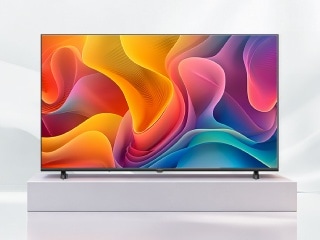- Home
- Science
- Science News
- New Biocompatible Optical Fibres Will Light Up at the First Sign of Disease
New Biocompatible Optical Fibres Will Light Up at the First Sign of Disease

Researchers from Massachusetts Institute of Technology (MIT) and Harvard Medical School have developed a biocompatible and highly stretchable optical fibre which can be implanted in the body to deliver therapeutic pulses of light or light up at the first sign of disease.
According to the study, the researchers suggested that such stretchable, strain-sensing optical fibres could be implanted or fitted along the length of a patient's arm or leg to monitor for signs of improving mobility.
The study also suggested that the fibres may also serve as sensors, lighting up in response to signs of disease.
"We may be able to use optical fibres for long-term diagnostics, to optically monitor tumors or inflammation. The applications can be impactful," said Xuanhe Zhao, Associate Professor, MIT in the study published in the journal Advanced Materials.
The fibre, made from hydrogel is as bendable and is an elastic, rubbery material composed mostly of water and may serve as a long-lasting implant that would bend and twist with the body without breaking down.
Using light to activate neurons in the brain, which is a highly active field known as optogenetics, in which researchers delivered short pulses of light to targeted tissues using needle-like fibres, through which they shine light from an LED source.
"But the brain is like a bowl of Jell-O, whereas these fibres are like glass - very rigid, which can possibly damage brain tissues. If these fibres could match the flexibility and softness of the brain, they could provide long-term more effective stimulation and therapy," Zhao added.
For the study, the researchers began to play with the fibre's optical properties, to see if they could design a fibre that could sense when and where it was being stretched.
Then they shone a laser light through the fibre and stretched and measured the spectrum of light.
By measuring the amount of light at the far end of the fibre, the researchers could quantitatively determine where and by how much a fibre was stretched.
Catch the latest from the Consumer Electronics Show on Gadgets 360, at our CES 2026 hub.
Related Stories
- Samsung Galaxy Unpacked 2025
- ChatGPT
- Redmi Note 14 Pro+
- iPhone 16
- Apple Vision Pro
- Oneplus 12
- OnePlus Nord CE 3 Lite 5G
- iPhone 13
- Xiaomi 14 Pro
- Oppo Find N3
- Tecno Spark Go (2023)
- Realme V30
- Best Phones Under 25000
- Samsung Galaxy S24 Series
- Cryptocurrency
- iQoo 12
- Samsung Galaxy S24 Ultra
- Giottus
- Samsung Galaxy Z Flip 5
- Apple 'Scary Fast'
- Housefull 5
- GoPro Hero 12 Black Review
- Invincible Season 2
- JioGlass
- HD Ready TV
- Laptop Under 50000
- Smartwatch Under 10000
- Latest Mobile Phones
- Compare Phones
- Samsung Galaxy A07 5G
- Vivo Y500i
- OnePlus Turbo 6V
- OnePlus Turbo 6
- Itel Zeno 20 Max
- OPPO Reno 15 Pro Mini 5G
- Poco M8 Pro 5G
- Motorola Signature
- Lenovo Yoga Slim 7x (2025)
- Lenovo Yoga Slim 7a
- Realme Pad 3
- OPPO Pad Air 5
- NoiseFit Pro 6R
- Xiaomi Watch 5
- Acerpure Nitro Z Series 100-inch QLED TV
- Samsung 43 Inch LED Ultra HD (4K) Smart TV (UA43UE81AFULXL)
- Asus ROG Ally
- Nintendo Switch Lite
- Haier 1.6 Ton 5 Star Inverter Split AC (HSU19G-MZAID5BN-INV)
- Haier 1.6 Ton 5 Star Inverter Split AC (HSU19G-MZAIM5BN-INV)
















